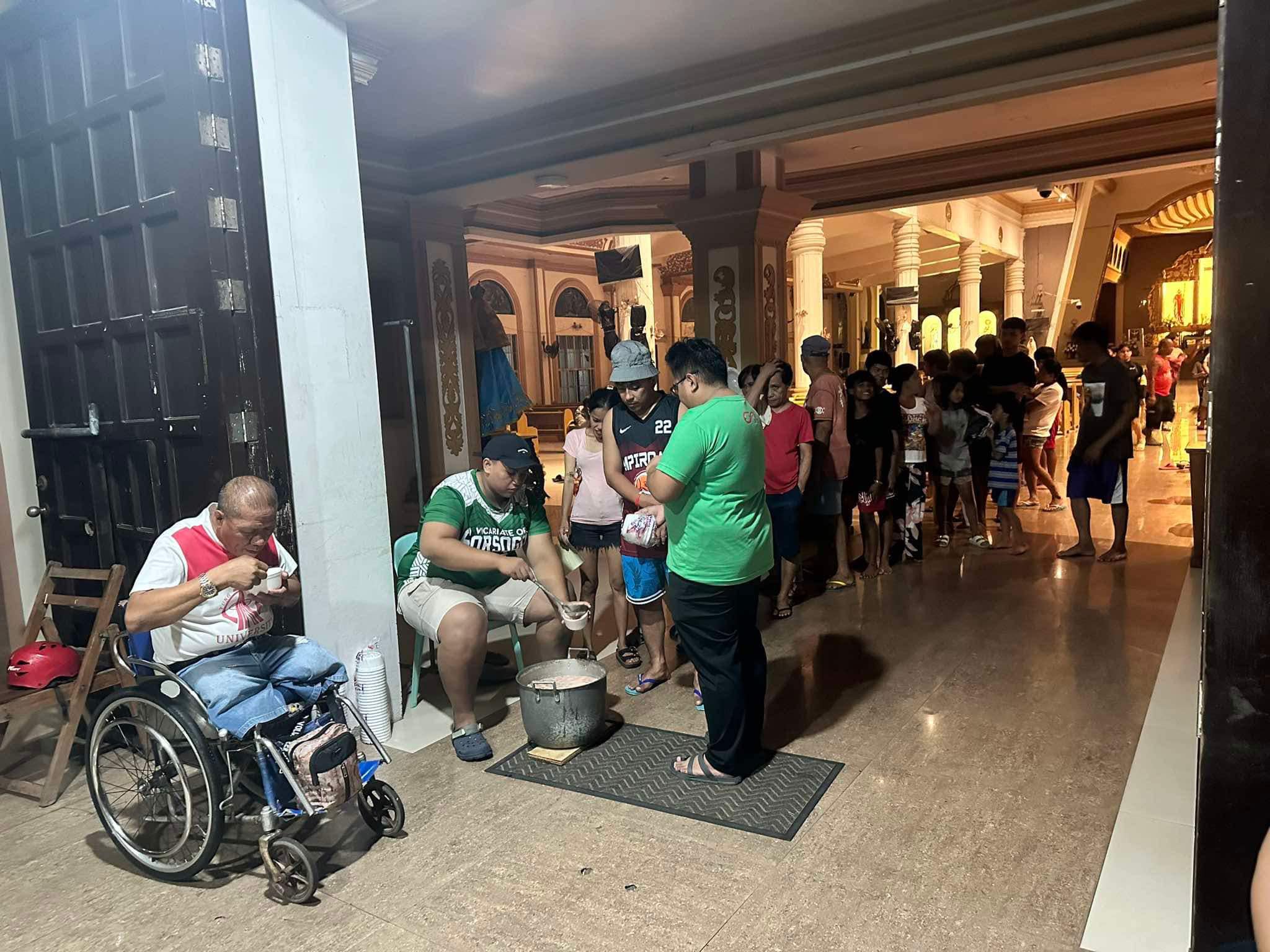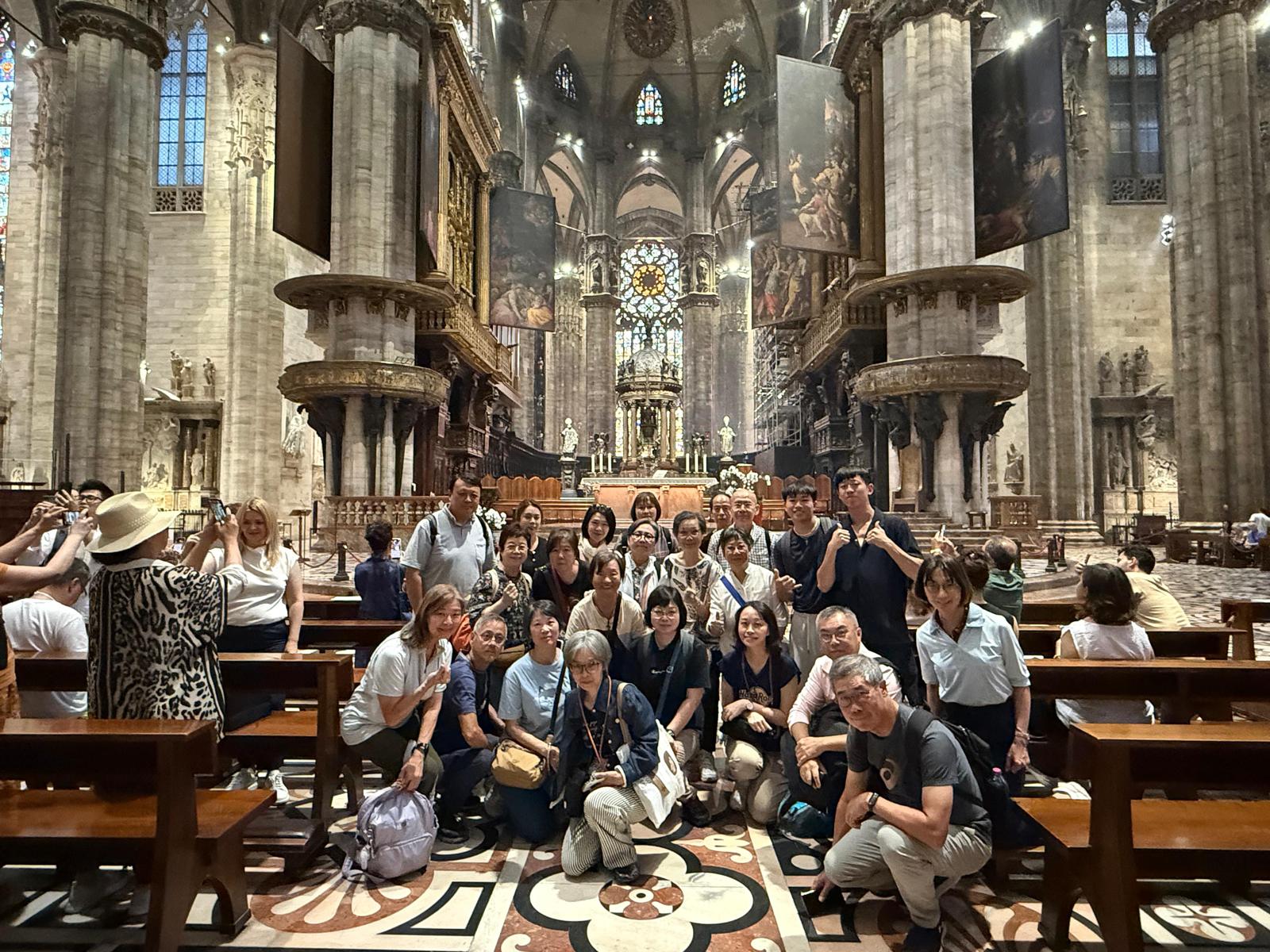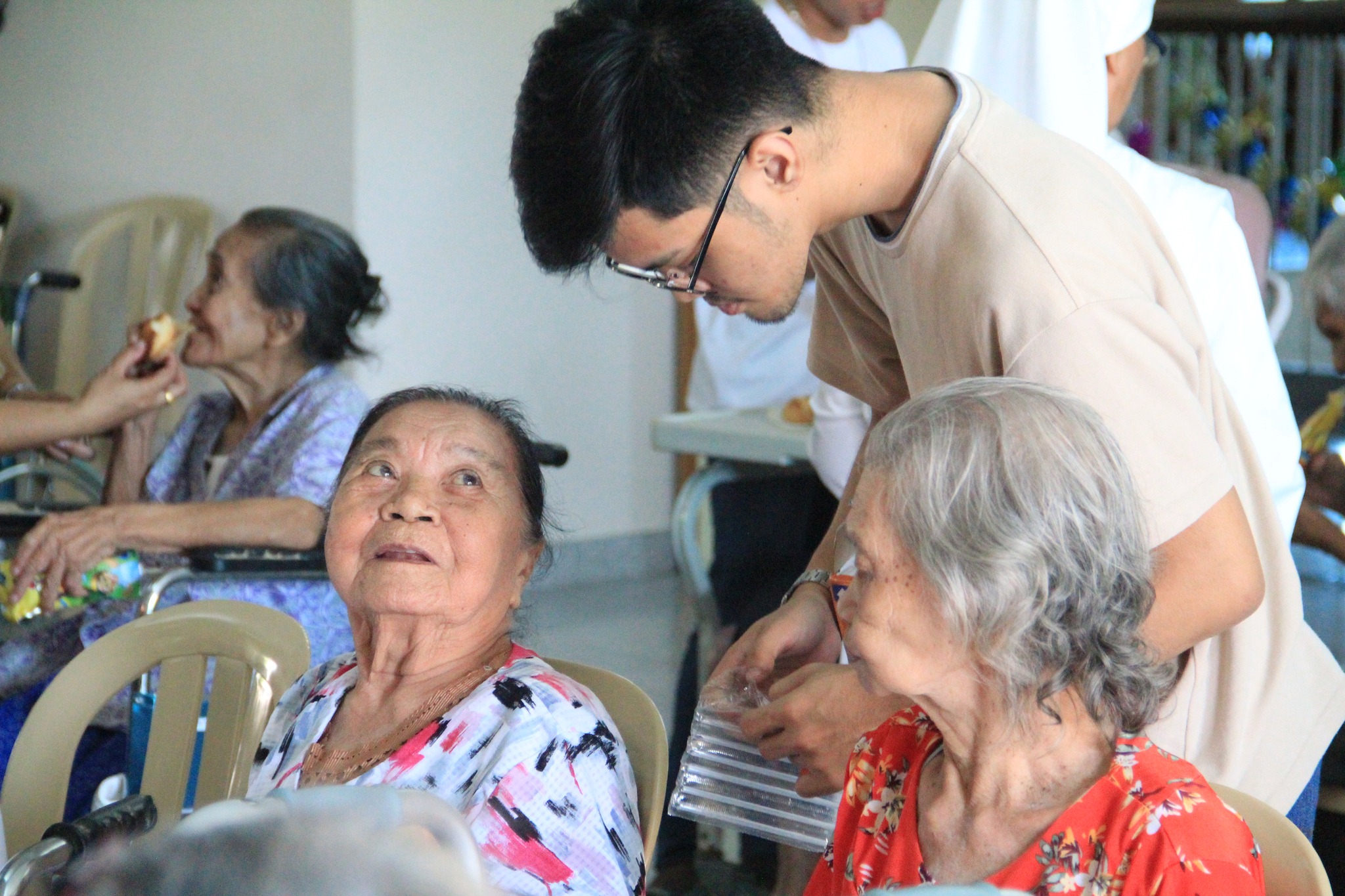Marco Carvalho
The Catholic Diocese of Macau welcomed the Year of the Snake this Wednesday, January 29th, with the observance of the feast of Our Lady of China. The commemoration of the Virgin of Dong Lu on the first day of the Lunar New Year is a liturgical tradition exclusive to the local Catholic Church. Elsewhere in the world, the solemnity of Our Lady of China falls every year on the day before the second Sunday of May. But how important is Marian devotion to Chinese Catholics? How did Our Lady of China become an integral part of the Lunar New Year celebrations in Macau? Andrew Leong, head of the Department of Catholic Theology at the Faculty of Religious Studies and Philosophy of the University of Saint Joseph, explains.
Why is the devotion to the Virgin Mary so attractive to Chinese?
Andrew Leong: Devotion to the Virgin Mary, I believe, is not a form of religious piety peculiar to the Chinese believers. It started in the first centuries of the Christian era and is still a hallmark of Catholicism worldwide. A good example is the devotion to Our Lady, with similar if not more intense enthusiasm, in Portuguese and Macanese Catholic circles.
Returning to the specific Chinese Catholic context, I am afraid it is more sociologico-religious than theological. Thus, what I can offer here is only my speculation, based on some historical observations. I have three points to make. First, during the Jesuit mission to China in the Late Ming Dynasty, Giulio Alenio (艾儒略, 1582–1649), in his Brief Record of the Words and Deeds of God Incarnate (《天主降生言行紀畧》), introduced a Confucian (thus Chinese) way of describing the relationship between Mary and Jesus, “the kind and loving mother and the son who is dutiful to his filial piety” (母慈子孝). In traditional Chinese culture, the expectation of children to fulfill the norm of filial piety to one’s mother cannot be underestimated. Since the Han Dynasty, Rule with Filial Piety had become a pillar of Chinese imperial rule. This is the reason why, even the emperors could not do much but to succumb when they were confronted with an ambitious Empress dowager. Furthermore, sinologists tend to believe that it was more important, in the Confucian tradition, for one to show filial piety to one’s mother than to one’s father, as there are much more stories about filial piety shown to one’s mother in the Classic of Filial Piety (《孝經》) then to one’s father. The influence of Alenio’s original articulation can still be seen in Chinese Catholic Marian parlance today, for example, the exhortation to “practice filial love to Our Lady” (孝愛聖母). Second, the Jesuit missionaries during Ricci’s time did not restrain themselves to show their own piety to Our Lady in their missions in China. Historians today are still able to detect these traces, e.g., churches that they built dedicated to Our Lady, Marian images that they distributed, and teachings on Our Lady that they proclaimed. The early proclamation of the Marian elements of Catholicism in this third wave of Catholic missions to China, the one that opens the territory to the presence of Catholicism in China until today, is, I believe, a significant contribution to the strong Marian devotions in China. Third, the development of native Marian devotions and native Marian apparitions contributes to the Chinese appropriation of Marian piety, especially Our Lady of Sheshan and Our Lady of Donglü. In 1868, during the Yangzhou Anti-Missionary Riot (揚州教案), A. Della Corte, S.J. (谷振聲), vicar apostolic of the Apostolic Vicariate of Kiang-nan (江南宗座代牧區宗座代牧) prayed before the Marian statue at Sheshan (佘山) that the Apostolic Vicariate could survive the riot without much harm. This indeed came true and Corte then built the Church of Sheshan (since 1942, Basilica of Holy Mary, the Help of Christians) dedicated to Our Lady for her protection. Since then this Marian devotion has taken root among Chinese Catholics, especially with the association between Our Lady of Sheshan and Our Lady Help of Christians. In June 1900, during the Boxer Rebellion (義和拳之亂), a mob attacked the village of Donglü (東閭), in which there was a Catholic community founded by the Vincentian Missionaries (遣使會傳教士). With their fervent prayer to Our Lady for protection, the mob was unable to take down the village even with forty-four waves of attack. There was also a pious legend alleging Mary appeared in white with a fiery horseman chasing after the mob to protect the village. In any case, afterwards, to give thanks to Our Lady for her protection, the villagers built a church dedicated to Our Lady (now, National Shrine of Our Lady of China, Donglü, Hebei). Since then the veneration of the Our Lady of Donglü spread rapidly among Chinese Catholics. Later, in 1924, at the Primum Concilium Sinense, the first council for China that took place in Shanghai, decided that the image of the Our Lady of Donglü is the official one of the Our Lady of China (中華聖母). There are indeed many scholars who take the view that the belief in Marian protection during the times of persecution helped strengthen Marian devotion in China.
The iconographic representation of Our Lady of Dong Lu bears many similarities to Buddhist deities. Do they explain the reason why devotion to the Virgin Mary was so eagerly accepted in China?
A.L: To understand the image of Our Lady of Donglü, again, a historical note is in order. A few years after the Boxer Rebellion, Father Rene Flament (雷孟諾) took over the care of the church at Donglü. He felt that the image that was in use was not good enough, so he hired a French painter to create a new Marian image. He laid out the following principles for the artist to follow: i) she must wear the attire of a Chinese empress, so that people from China and abroad can recognize the elegance and grace of Our Lady as a Chinese empress once they see the image;
ii) the image must show the benevolent countenance of the Virgin Mary and she must wear a crown to indicate that she is the Queen of heaven and earth; iii) the Virgin Mary must carry Jesus, while still maintaining the solemn and dignified Chinese style to show her lofty status as the Mother of God. Soon, they decided to take the attire of Empress Dowager Cixi, who was still in power, as the model for the attire of Our Lady in the image. Thus, the image of Our Lady of Donglü as we know it was completed in 1908. Thus, the image was not intended to be, and it is not, similar to any Buddhist deities. Again, I believe, the popularity of Marian devotion among Chinese Catholics can be attributed to the reasons stated above.
Is the tradition of connecting faith with culture for the Lunar New Year, by invoking the devotion to Our Lady of China, an extreme form of acculturation? Or is it a good way to try to harmonize faith and culture?
A.L: To begin, I believe that a definition of terms is needed. In Catholic parlance, especially in the field of the liturgy, one seldom uses the term “acculturation” but, when dealing with issues concerning the engagement of the liturgy with other cultures, the term “inculturation” is more often employed. It was a neologism coined only in the last century in the theological circle. Soon, the Extraordinary Synod of Bishops in 1985 offered its own view on inculturation: “Because the Church is communion, which joins diversity and unity in being present throughout the world, it takes from every culture all that it encounters of positive value. Yet inculturation is different from a simple external adaptation, because it means the intimate transformation of authentic cultural values through their integration in Christianity in the various human cultures. (Final Report, D.4)”. Referring to the 1985 Synod, Pope Saint John Paul II states: “[I]nculturation means the intimate transformation of authentic cultural values through their integration in Christianity and the insertion of Christianity in the various human cultures.” (Redemptoris Missio [1991], 52.2). In a 1994 document issued by the then Congregation for Divine Worship and the Discipline of the Sacraments, The Roman Liturgy and Inculturation, the Christological principle of inculturation is beautifully encapsulated as follows: “On coming to the earth the Son of God, “born of a woman, born under the law” (Gal. 4:4), associated himself with social and cultural conditions of the people of the alliance, with whom he lived and prayed. In becoming a man he became a member of a people, a country and an epoch and in a certain way, he thereby united himself to the whole human race.” (no. 10.2). Thus, the document further teaches that: “Faith in Christ offers to all nations the possibility of being beneficiaries of the promise and of sharing in the heritage of the people of the covenant (cf. Eph. 3:6), without renouncing their culture” (the emphasis is mine).
Certainly, not all elements of all cultures are compatible with the Catholic faith. In these cases, according to the Vatican II Constitution on the Liturgy Sacrosanctum Concilium, one should reject those elements that are “indissolubly bound up with superstition and error”. At the same time, the spirit of the Council, as reflected in its text, urges us to actively salvage as much as possible those elements that are “not indissolubly bound up with superstition and error, […] so long as they harmonize with [the] true and authentic spirit [of the liturgy]” (cf. no. 37; my emphasis). So much for theory. Let us take a look at a few examples. The most famous one has to be Christmas. December 25, in the ancient Roman calendar, is the winter solstice. It is the day after which the length of daytime ceases to diminish but to grow little by little. During the Roman Empire, this day was celebrated as the birthday of the Divine Unconquered Sun (Deus Sol Invictus). When deciding on the date of the birth of Jesus, Christians of the time adopted the same day, as the birthday of Christ the Sun of Righteousness (Christus Sol Iustitiae). In this example, Christianity adopted the Roman feast of their sun god, transforming it and integrating it into the Christian faith, harmonizing it with the true and authentic spirit of the liturgy. Similar is the case of the Solemnity of the Mother of God on January 1. In ancient Rome, that day was the feast day of the Roman god Janus. After the Christological proclamation of Mary as the Mother of God, early Christianity began to celebrate a feast of the Mother of God on this day to Christianize it.
In the specific case of Macau, when did the feast of Our Lady of China and the celebration of the Lunar New Year became intertwined?
A.L: The celebration of the Feast of Our Lady of China developed similarly in the Diocese of Macau. After the Shanghai Synod in 1924, the whole of China was dedicated to Our Lady of China. In 1928, Pope Pius XI approved that the image of Our Lady of Donglü be designated to be the image of Our Lady of China, and that Mary is the Patron of the Chinese people. Later, in the middle of the Second Sino-Japanese War (1937–1945), Pope Pius XII approved the celebration of the Feast of Our Lady Queen of the Chinese People (Regina Sinarum) on 31 May. In 1973, The Taiwan Conference of Catholic Bishops requested to change the title of the feast to be the “Feast of Our Lady of China” and to move it to the Saturday before the second Sunday of May (Mother’s Day). In Macau, what happened one year later in Portugal triggered another change. The Carnation Revolution that took place in Portugal in 1974 resulted in the Portuguese renunciation of all its ultramarine colonies, including Macau. In other words, Portugal renounced its claim of sovereignty over Macau while continuing to govern the territory. In response to this political change, Dom Arquimínio Rodrigues da Costa (高秉常主教), Bishop of Macau (1976–1988), decided to adjust the total number of holy days of obligation in the Diocese. At the same time, some member of the Diocesan clergy, modeling on the Feast of Mother of God celebrated on the First Day of the Year, proposed to move the Feast of Our Lady of China to the First Day of the Lunar Year, dedicated the coming year to the care and protection of Our Lady of China. With the approval from the Holy See, this is the reason why the Diocese of Macau is the only place where the Feast of Our Lady of China is celebrated on the Lunar New Year.
If one reads carefully the liturgical texts used in the Feast of Our Lady of China, one would not have any doubt that the liturgical celebration fits very well with the occasion of Lunar New Year. In a new year celebration believers natural wish to obtain God’s blessings; this is exactly what the Collect asks God for: “Through the patronage and prayers of Our Lady of China, [God our Father,] grant us your plentiful blessings and peace.” At the same time, the Collect prays for the furthering of the Catholic Faith in China: “May all people of our nation come to know you and glorify your name.” The Prayer over the Gifts reflects the religio-ethical dimension of the Marian feast, or ad imitationem Mariae: “[Merciful Lord,] help us to follow the example of the Virgin Mary: to seek You in all things and to do your will with gladness.” What the liturgical assembly prays after receiving communion is, in my opinion, perfect especially in the First Day of the Year: “[Lord,] through her [i.e., the Blessed Virgin Mary, Our Lady of China] intercession protect us, and help us to follow her example to serve You with love.” It is a prayer for Discipleship per imitationem Mariae. Thus, I personally consider the celebration of the Feast of Our Lady of China on the Lunar New Year to be a rather positive example of inculturation. The celebration takes from Chinese culture the celebration of the new year, to give thanks to God and ask for His blessings for the coming year. At the same time, the liturgical celebration transforms the cultural event and integrates it into the Christian faith.
How relevant is the devotion to Our Lady of China in the formation of a Chinese Catholic identity?
A.L: The question can be rephrased as “How significant is the devotion to Our Lady of China to a Chinese Catholic as Chinese Catholics?”. This is a difficult question, as it is more concrete and personal rather than general and theological. I think only descriptive research is able to offer an adequate answer.
Should Catholics celebrate or not Chinese New Year? Are Catholics in China haunted by this sort of dilemma?
A.L: To answer the question, I would like to quote again the 1994 CDW document The Roman Liturgy and Inculturation: “Faith in Christ offers to all nations the possibility of being beneficiaries of the promise and of sharing in the heritage of the people of the covenant (cf. Eph. 3:6), without renouncing their culture” (no. 14; my emphasis).
I do not think Chinese Catholics should not celebrate the Chinese New Year, and, in my opinion, it does not present us with a dilemma. The essence of the celebration of the Lunar New Year is more (agri)cultural than religious. Of course, in ancient China the two of them were closely intertwined, but nowadays most people are intelligent enough to be able to distinguish between them. Today, many of the elements of the celebration of LNY are deprived of any sign of superstitions. There are certainly rituals and associated gestures performed by adherents of other Chinese religions in the period. However, one can fully celebrate the Lunar New Year without any of them.
After all, the celebration of the Lunar New Year to the Chinese people in general was, and probably still is, the occasion of giving thanks to the supernatural realm for all that has been provided, together with their labor, has produced and of seeking continuous blessings for equal (if not better) harvest. The liturgical inculturation of CNY, either by celebrating on that day the Feast of Our Lady of China (in Macau) or the Eucharistic Celebration on Lunar New Year Day (in Hong Kong and other Chinese Catholic communities), is an exercise of incorporating this Chinese cultural event, mutatis mutandis, into the Christian faith, and, if I may say, in a successful way.
In short, insofar as one avoids engaging in any (superstitious) elements and rituals related to other Chinese religions and popular Chinese religiosity, celebrating the Chinese New Year would not present any problem to any Catholic.


 Follow
Follow


